Description
Canna, Canna edulis, also known as Achira and Queensland arrowroot, is a highly productive, hardy, perennial food source. The rhizomes are the main food product, however, immature seeds and young growing shoots may also be harvested for consumption. Canna grows six to eight feet tall and produces abundant flowers and leaves. The rhizomes are high in starch content, yet are easily digestible. This plant is closely related to ornamental canna plants; however, this plant has been domesticated as a food source for its starchy roots for thousands of years. Canna thrives in poor soils and waterlogged conditions and rhizomes can live underground for years without becoming too woody or inedible. This is the perfect sow-it-and-forget-it plant; leave it in the ground and dig as you desire a starchy food in times of need. Not to mention this plant is highly ornamental!
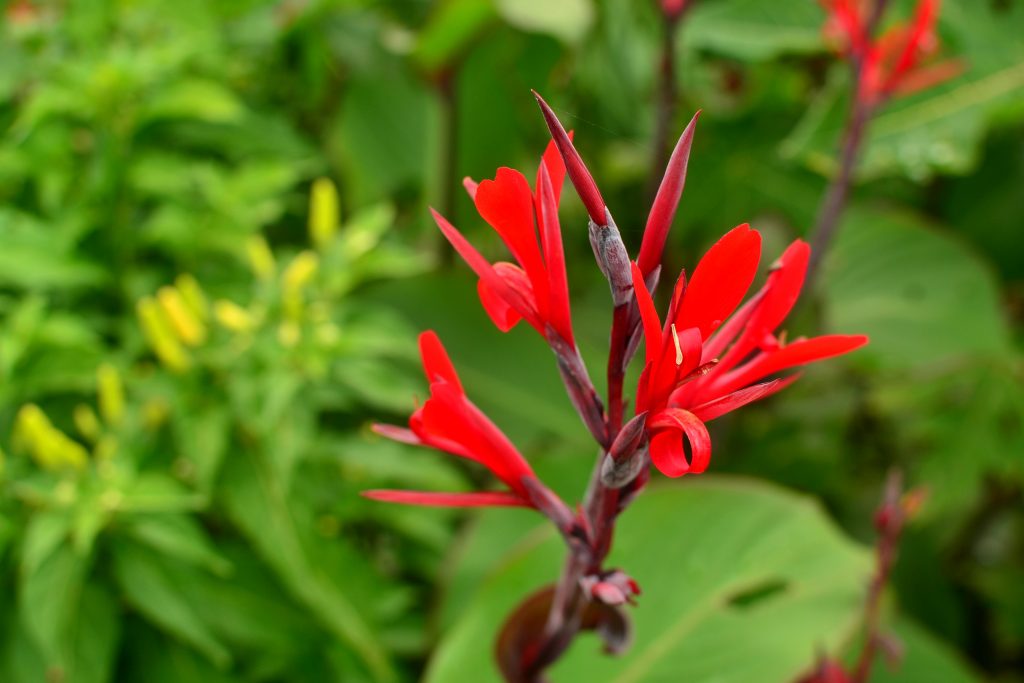
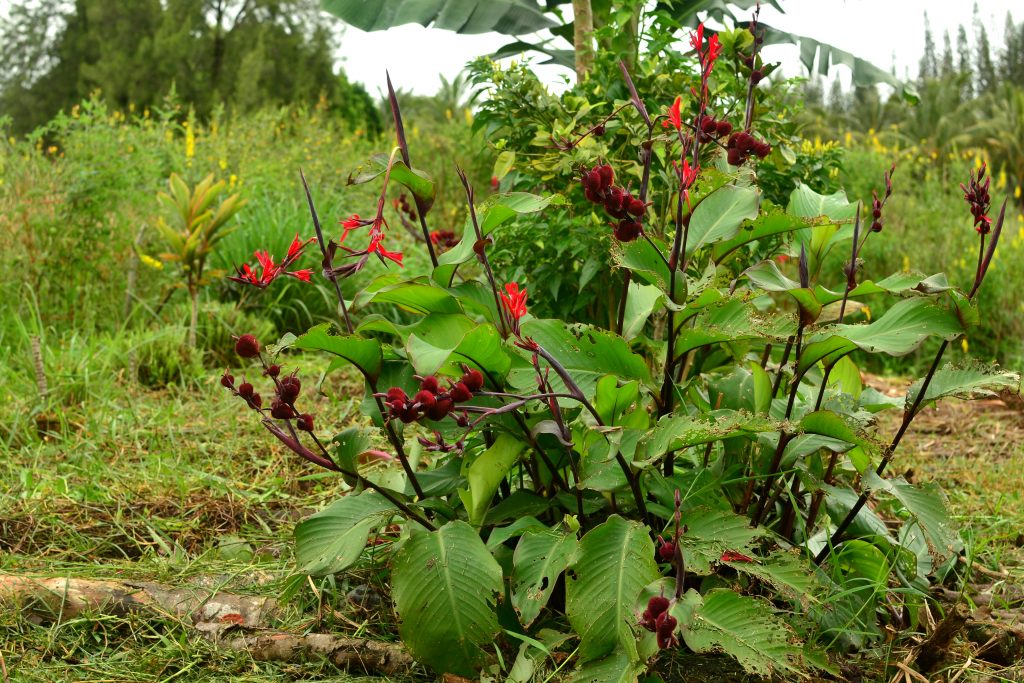
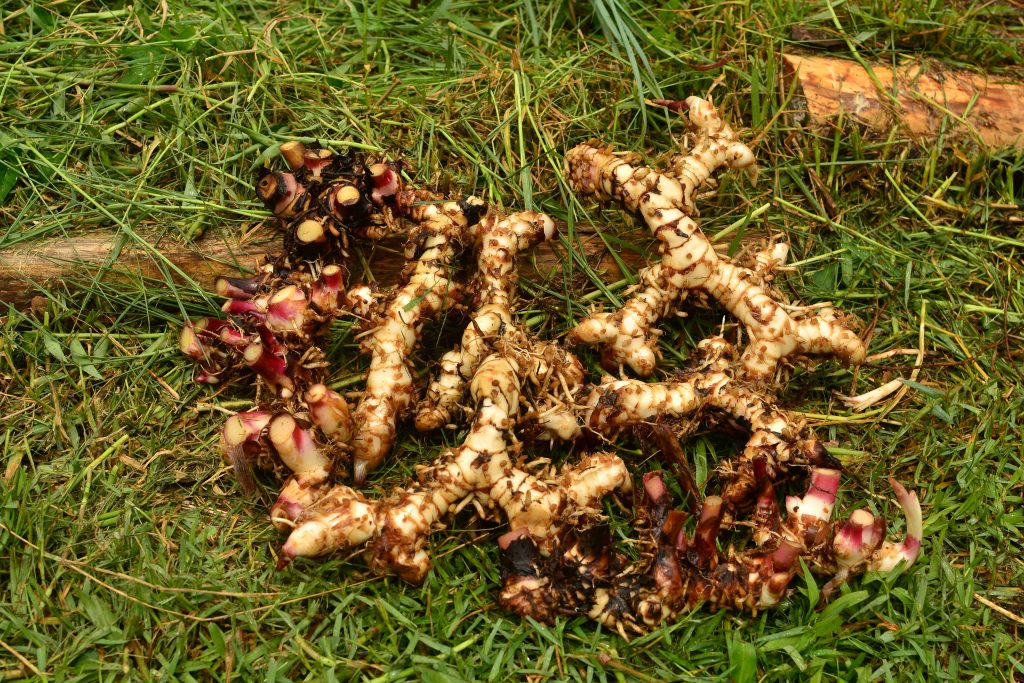
Propagation
Canna is typically grown from root division: digging and splitting of rhizomes and replanting in new locations. Make sure propagation material has at least two buds for new growth.
This particular variety does grow true from seed, however, not all varieties do, especially where cross-pollination with ornamental varieties can occur. Scarification is commonly used to speed seed germination.
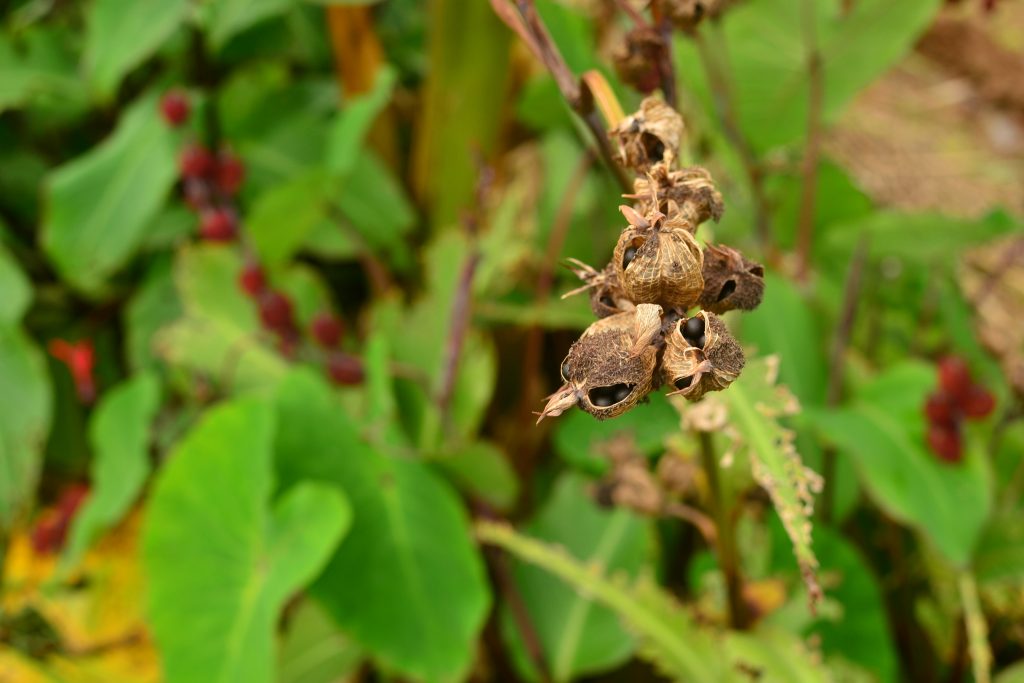
Canna ripe seed pods
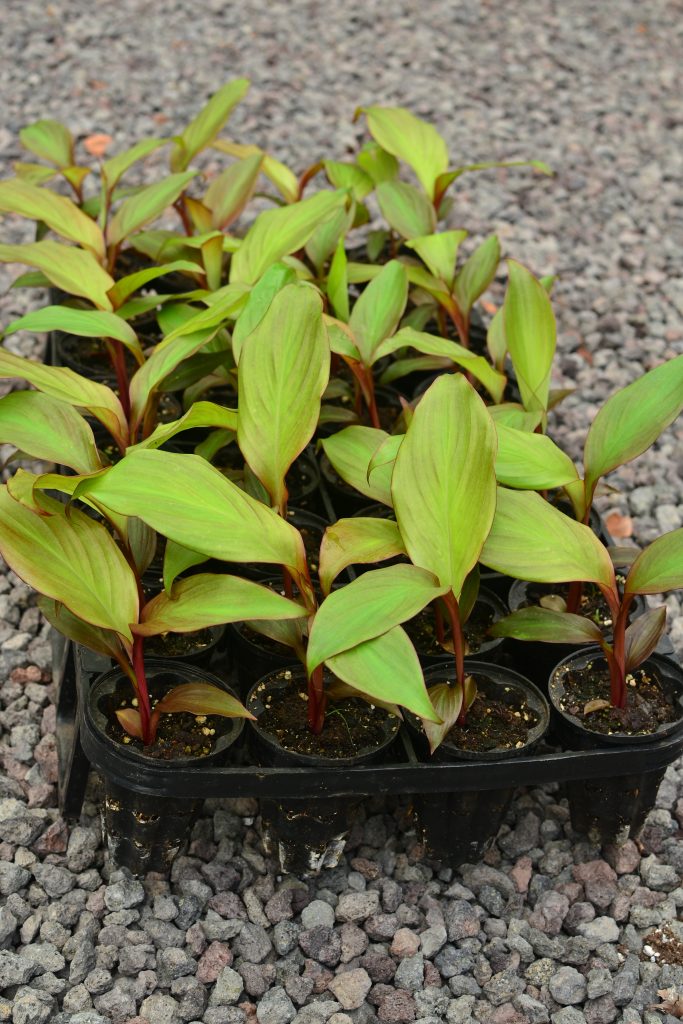
Canna Seedlings
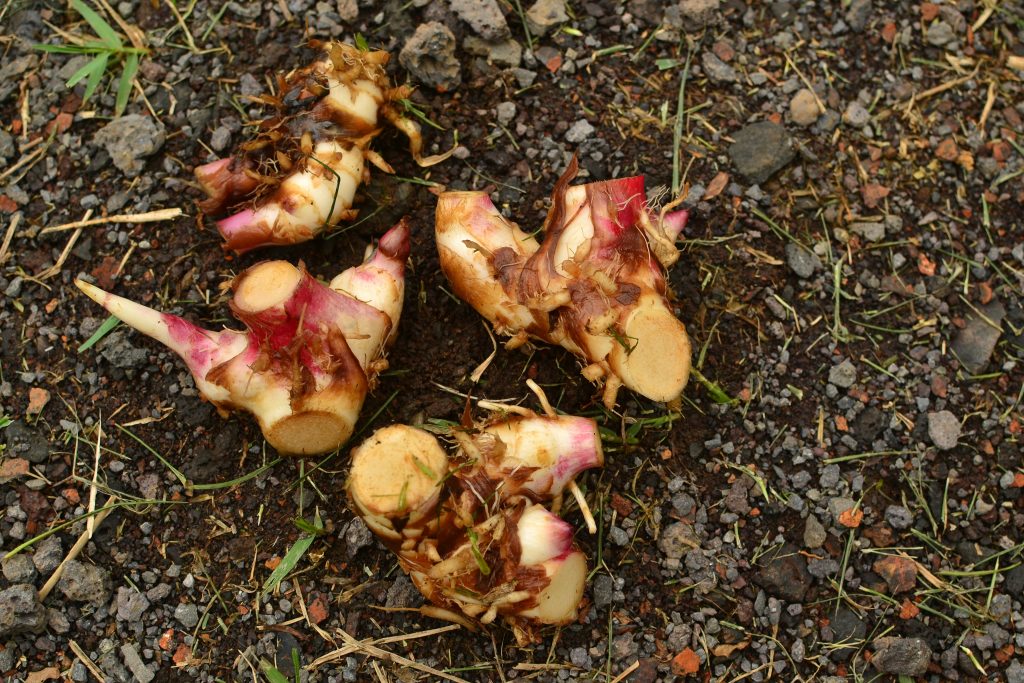
Canna root division propagules
Care
Canna is a carefree plant. It will grow in light shade or full sun. Canna may be used as a mulch source and likes to be regularly pruned to remove exhausted or older growth.
Harvest of rhizomes may begin as early as four months from root division. Ideal harvest time is six to ten months after planting.
Eating
Young tender shoot tips may be consumed as a vegetable.
Rhizomes are cooked and consumed like a potato, typically boiled or baked. A traditional method for preparation is to bake them underground whole for 12 hours, then scoop out the insides and consume. The starch may be extracted to make a flour to use as a thickener. Some Asian cultures even make clear noodles with the flour.
Where to obtain planting materials
I’ve only met one other person growing this plant intentionally on our island. I have seen this plant one other time on a hike to a Puna beach. Besides that, I’ve only seen the ornamental varieties around. Try an internet search, or ask around to see if it’s more commonly grown in your area.
My Garden
I looked for this plant for a long time; I finally stumbled upon it while working at a friend’s farm. He has many varieties of canna growing. One day, I asked him about this one colorful canna plant. He said, “that’s achira from the Andes!” Little did he know I’ve been searching for this particular species for years! He said he only had one plant and I could take some seeds to propagate it. Luckily, it was in a lone location in his agroforest so it wasn’t cross-pollinated with any other species. I took my few seeds and started a tray of them. Within a few weeks’ time, I had 32 little keiki awaiting a spot in the ground! I eagerly planted them out at two different sites and feeling the need to spread these hard to find genetics I gave some away to some trusted gardener friends. At this point, I’ve collected so many of the seeds from my plants that I don’t even know what to do with them! I will continue to plant them throughout my agroforest in the wettest locations where some other plants don’t want to grow so I can create patches of food insurance for later. My friend’s farm is located in a fairly dry environment; once I took those seeds and planted them in a wet location, they became extremely prolific!
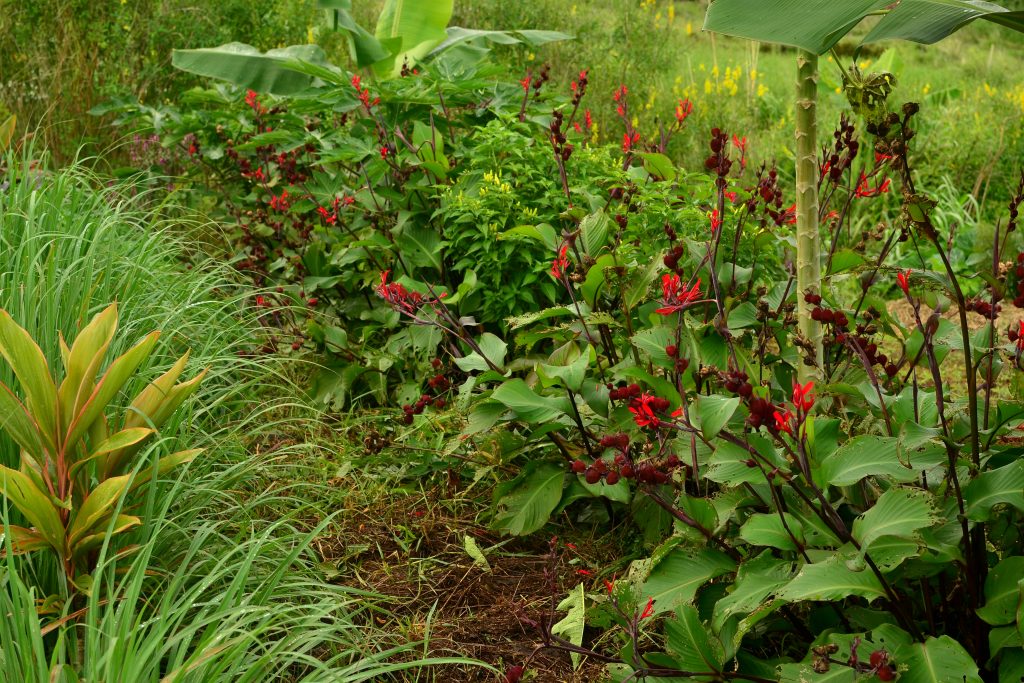
Canna with: tangerine, avocado, tangelo, dwarf maoli bananas, papaya, hawaiian hot peppers, bell peppers, lemba, kalo, lemongrass and ti.
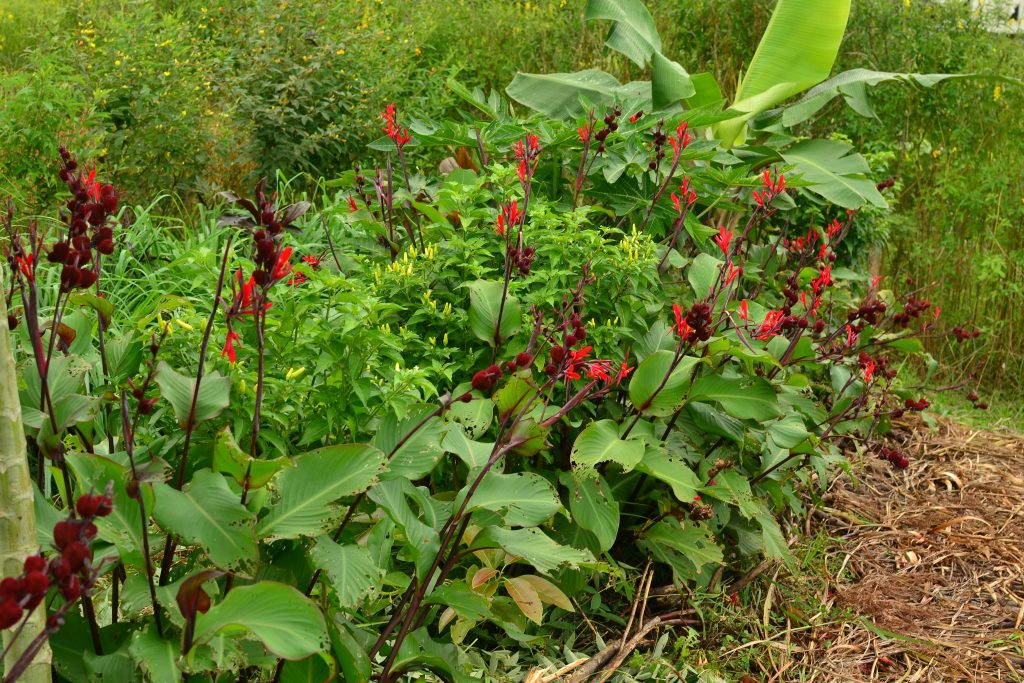
Before pruning and mulching.
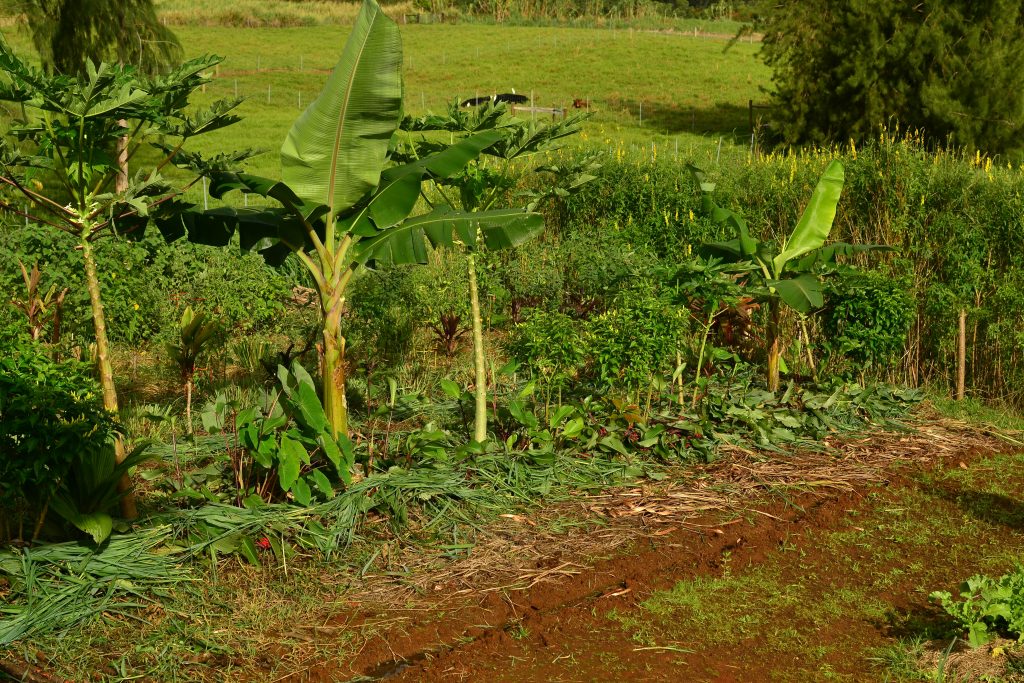
After pruning and mulching.
Happy Gardening!
Nice summary. The variety you are growing looks like Canna indica, which can produce starch like any species in the genus but are much less productive than the selected forms grown as achira in south america. I grow Queensland arrowroot, an old clone with huge tubers that was once grown commercially long ago in my part of Australia. I also collected related species with large tubers like altensteinii and have been breeding them to produce new varieties for a few years now. Let me know if you would like some hybrid seed to try. I did a post recently on my blog about making Canna flour. https://zeroinputagriculture.wordpress.com/2019/10/21/tools-and-techniques-canna-flour/
interesting! i was just assuming the rhizomes i had were small because of age. i also grew them from seed so i assumed they would need a longer time frame to size up. its really confusing trying to determine species. wish i had easy access to clones!
I am on the Big Island of Hawaii and have grown some canna from seed that was supposed to be achira but it has small tubers and no purplish tint. Did you have any luck with an Australian variety?
shane sent me a few of his selected hybrid seeds. ive only grown out 4 of them but one is a much larger plant and much faster growing. i havent eaten/dug it yet. it has been in the ground about 9 months now. so im planning on digging it and trying it, but the tubers i see on the plant look huge in comparison to all the others ive grown
Hi there –
How can i identify the edible one from its non-edible hybrids or variants? I see this kind of plant everywhere here in Portugal, but since nobody seems to know about its use, it’s hard to distinguish if those are or not indeed edible?!
all cannas are edible. just some are preferred due to their larger roots. i actually believe the plant ive described in this article is not the true edulis. and i do not know where to find the true edulis either. i got some seeds sent to me from Shane in the comments above, his hybrids. ive not dug them yet, but from what i can tell, they are closer to the real deal, i see very large rhizomes at the base of the stems and the plants are very vigorous and huge. very cool plants!
Very cool, will try to dig some rhizomes for experiments. Thanks for your answer!
youre welcome!
Any chance of an update? How were the rhizomes? Any chance you would sell rhizomes with stalk?
I am here on The Big Island in upper Puna.
i havent eaten them too many times. i had to move so i had to reset all my crops. growing fine, but i havent gotten into them yet. have you been down to the Puna Urban Food Forest? Norris shares out his cannas readily. he has some known cultivars. i have shared most of what i have with him, but i think his stuff is still young as well
Hello Shane. I have been searching for the true achira for many years and would love some seed of you old clone, if possible. I have several supposed achira but all are slightly different and don’t have huge tubers. I don’t know how to tell 8f its the real one or not. I also have read that the true achira has better flavor than others. I used to have a huge collection of ornamental varieties but most were wiped out by the canna virus years ago. I have been trying to collect some without the virus but it keeps showing up. Have you had the problem with the virus in Australia? Please let me know if you are interested in sending some seed to the US. Email customscapes2@aol.com.
How do you prepare rhizomes to make flour?
Hi, Shane! I am also in the US, and would love to have some canna Edulis seeds if it is possible to ship them. Please let me know if/how this is possible.
Very educative. here in Sri Lanka, we have a cultivar with a sweet taste. Suitability for diabetics?
I grow them in the Canaries. I got seeds from France and from Australia.
They just like water a bit too much for our climate!